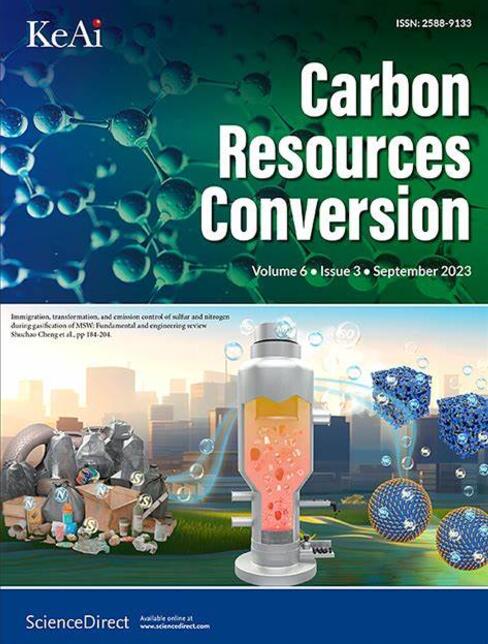Use of spent yeasts from bioethanol production plant as low-cost nitrogen sources for ethanol fermentation from sweet sorghum stem juice in low-cost bioreactors
IF 7.5
3区 环境科学与生态学
Q2 ENERGY & FUELS
引用次数: 0
Abstract
Two spent yeasts from an ethanol production plant, spent yeast after distillation (SY-AD) and spent yeast after fermentation (SY-AF), were used as low-cost nitrogen sources for ethanol fermentation from sweet sorghum stem juice (SSJ) by a commercial dry yeast (Saccharomyces cerevisiae) in air-locked flasks. SY-AF was the more effective nitrogen source for ethanol fermentation, giving ethanol concentration (PE) and ethanol productivity (QE) values of 95.22 g/L and 1.98 g/L·h, respectively. When SY-AF was disrupted by autolysis, and the spent yeast hydrolysate (SYH) obtained was used as a nitrogen supplement. It was found that ethanol production in terms of PE and QE values increased to 102.20 g/L and 2.83 g/L·h, respectively. When three bioreactors, a stirred-tank bioreactor (STR, a typical bioreactor), a column bioreactor with stirrer (CS-R, a tower bioreactor) and an external loop bioreactor (ELR, a low-cost bioreactor with no agitation), were used for ethanol production from the SSJ supplemented with SYH, the fermentation efficiencies of all bioreactors were not different. Appropriate aeration during fermentation (0.31 vvm for 12 h) in the three bioreactors could enhance the QE value, reaching 3.36 g/L·h. Both the CR-S and ELR could be successfully used for ethanol production from SSJ supplemented with SYH.

利用生物乙醇生产工厂的废酵母作为低成本氮源,在低成本生物反应器中对甜高粱茎汁进行乙醇发酵
以某乙醇生产工厂的两种废酵母,即蒸馏后废酵母(SY-AD)和发酵后废酵母(SY-AF)作为低成本氮源,利用商业干酵母(Saccharomyces cerevisiae)在密闭烧瓶中发酵甜高粱茎汁(SSJ)。SY-AF是更有效的乙醇发酵氮源,其乙醇浓度(PE)和乙醇产率(QE)分别为95.22 g/L和1.98 g/L·h。当SY-AF被自溶破坏时,得到的酵母废水解液(SYH)用作氮补充物。结果表明,PE和QE值分别提高到102.20 g/L和2.83 g/L·h。采用搅拌槽生物反应器(STR,典型的生物反应器)、带搅拌柱生物反应器(CS-R,塔式生物反应器)和外环生物反应器(ELR,无搅拌的低成本生物反应器)3个生物反应器,从SSJ中添加SYH生产乙醇,所有生物反应器的发酵效率没有差异。发酵过程中适当曝气(0.31 vvm, 12 h)可提高QE值,达到3.36 g/L·h。CR-S和ELR都可以成功地用于SSJ添加SYH生产乙醇。
本文章由计算机程序翻译,如有差异,请以英文原文为准。
求助全文
约1分钟内获得全文
求助全文
来源期刊

Carbon Resources Conversion
Materials Science-Materials Science (miscellaneous)
CiteScore
9.90
自引率
11.70%
发文量
36
审稿时长
10 weeks
期刊介绍:
Carbon Resources Conversion (CRC) publishes fundamental studies and industrial developments regarding relevant technologies aiming for the clean, efficient, value-added, and low-carbon utilization of carbon-containing resources as fuel for energy and as feedstock for materials or chemicals from, for example, fossil fuels, biomass, syngas, CO2, hydrocarbons, and organic wastes via physical, thermal, chemical, biological, and other technical methods. CRC also publishes scientific and engineering studies on resource characterization and pretreatment, carbon material innovation and production, clean technologies related to carbon resource conversion and utilization, and various process-supporting technologies, including on-line or off-line measurement and monitoring, modeling, simulations focused on safe and efficient process operation and control, and process and equipment optimization.
 求助内容:
求助内容: 应助结果提醒方式:
应助结果提醒方式:


